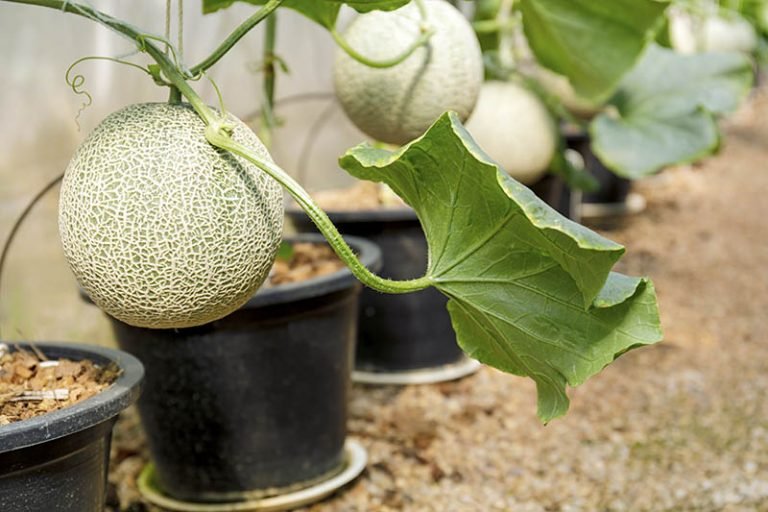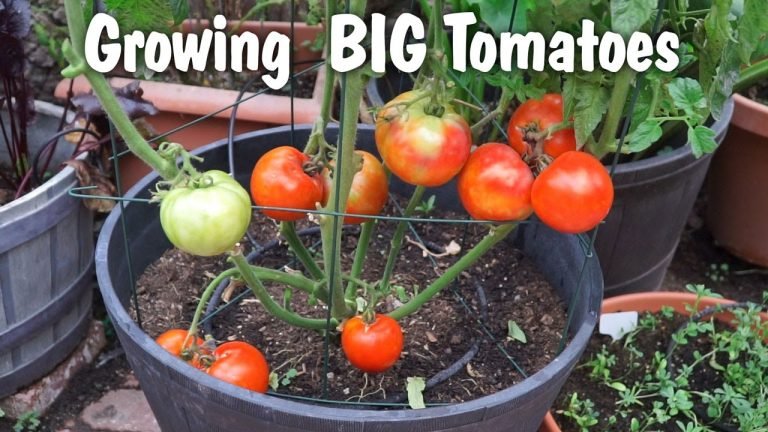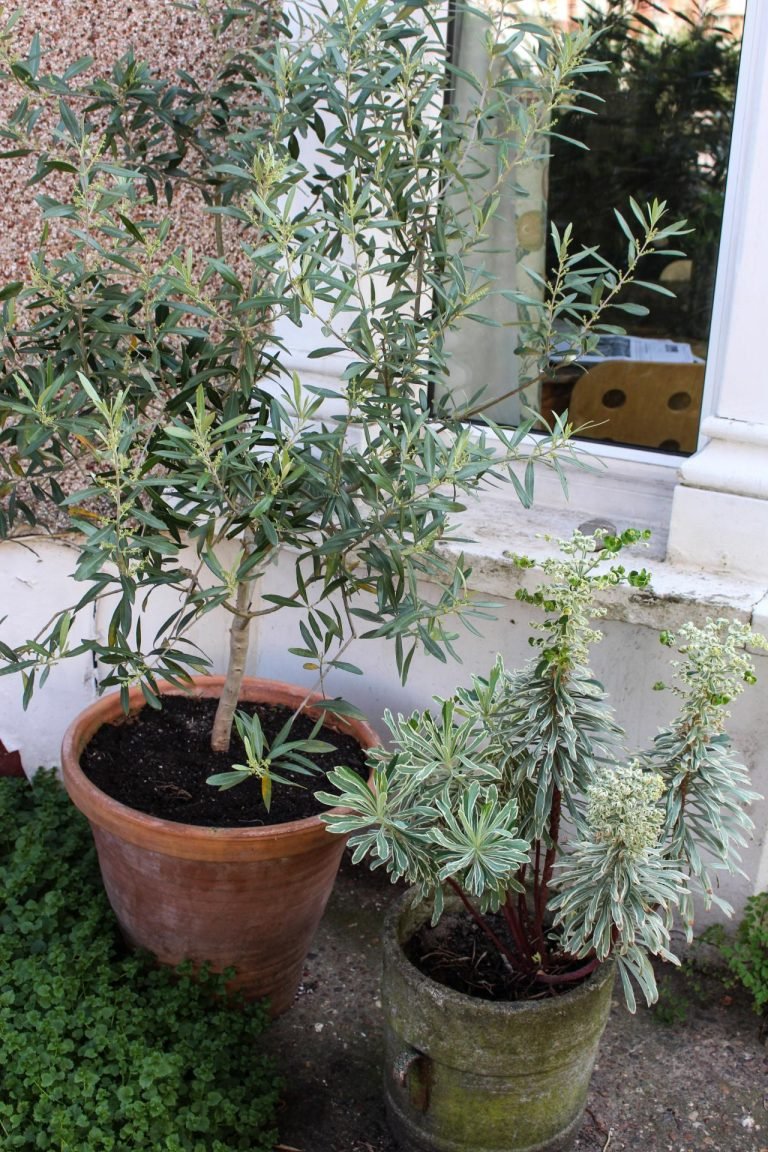how to grow fig tree in a pot – [Beginners Guide]
Have you ever considered growing a fig tree in a pot? It may sound unusual, but it’s actually a great idea for anyone looking to grow their own fresh and delicious fruit at home. Growing figs in pots is becoming increasingly popular due to their easy maintenance, space-saving qualities, and ability to thrive in different climates.
As someone who has grown figs in pots for several years now, I can tell you from personal experience that it’s a rewarding and enjoyable experience. With the right care and attention, you can watch your fig tree grow from a small sapling to a fruitful plant right in your own backyard or balcony.
In this guide, we’ll explore everything you need to know about growing a fig tree in a pot. From selecting the right variety to choosing the perfect container, we’ll cover all the basics to get you started. We’ll also discuss important aspects such as soil, watering, fertilizing, and pruning, and how to avoid common problems such as pests and diseases.
Growing figs in pots is not only a great way to enjoy fresh fruit at home, but it’s also a rewarding hobby that can bring you closer to nature and improve your overall well-being. So, let’s get started and learn how to grow a thriving fig tree in a pot!
Pot or container selection
When it comes to growing a fig tree in a pot, choosing the right pot is just as important for the health and growth of your plant. Fig trees have deep and extensive root systems, so it’s important to choose a pot that is both large and deep enough to accommodate them.
As a general rule, you should aim for a pot that is at least 18 inches (45 cm) in diameter and 18 inches (45 cm) deep. This will give your fig tree enough space to grow its roots and establish itself in the pot. If you have limited space, you can choose a smaller pot, but keep in mind that your fig tree may not grow as large or produce as much fruit.
When it comes to the construction of your pot, there are a few things to keep in mind. First, choose a pot that is made of a durable material, such as ceramic, plastic, or fiberglass. These materials are lightweight and will not crack or break easily. Avoid pots made of metal or wood, as they may rust, rot or leach harmful chemicals into the soil.
Second, ensure that your pot has drainage holes in the bottom to allow excess water to drain out. This is essential to prevent root rot and fungal diseases. If your pot doesn’t have drainage holes, you can drill some yourself or add a layer of rocks or gravel in the bottom to help with drainage.
Finally, choose a pot that is functional and well-suited for growing fig trees. You can choose a decorative design if you like, but make sure that it’s practical and has enough room for your fig tree to grow.
In summary, to grow a fig tree in a pot, you’ll need a large and deep pot made of durable material with drainage holes in the bottom. Choosing the right pot is crucial to the success of your fig tree, so take the time to find one that’s perfect for your needs.
Make suitable soil mix
When it comes to growing fig trees in pots, soil selection is just as important as pot selection. The right soil mix can provide the necessary nutrients and drainage to support healthy growth and fruit production. Here’s what you need to know about selecting soil for your fig tree:
Type
Fig trees thrive in well-draining soil that is rich in nutrients. It’s best to use a high-quality potting mix specifically formulated for fruit trees or citrus trees. These mixes are usually made from a combination of peat moss, perlite or vermiculite, and organic matter like compost or coconut coir, and are designed to provide the right balance of nutrients and drainage for your plants.
Avoid using garden soil or topsoil, as these types of soil may not have the right composition for container-grown plants. They may also contain weed seeds, pests or diseases that can harm your fig tree.
Mixture
While a high-quality potting mix can provide most of the necessary nutrients, you can further boost the soil quality by adding amendments. Some options include:
- Compost: Adding compost to your soil mix can help improve its structure, drainage, and nutrient content. Compost also contains beneficial microorganisms that can help with soil health and fertility.
- Organic fertilizers: You can use organic fertilizers, such as bone meal, fish meal or blood meal, to provide additional nutrients for your fig tree. Follow the package instructions for application rates and frequency.
- pH adjusters: Figs prefer a slightly acidic soil pH between 6.0 and 6.5. You can use lime to raise the pH, or sulfur to lower it. Test the soil pH regularly to ensure it stays within the ideal range for your fig tree.
By choosing the right soil mix and adding the right amendments, you can give your fig tree the best possible growing environment and set it up for success.
How to plant the fig tree?
Growing a fig tree in a pot at home can be a rewarding experience. Here’s a step-by-step guide to help you get started:
Step 1: Choose the right pot
Select a pot that is large enough to accommodate the root system of your fig tree. A pot with a diameter of at least 16 inches and a depth of at least 16 inches is a good size for most fig tree varieties.
Make sure the pot has drainage holes to allow excess water to drain away from the roots. If the pot doesn’t have drainage holes, be sure to add some to the bottom before planting.
Step 2: Fill the pot with soil
Fill the pot with a high-quality potting mix formulated for fruit trees. A good mixture is one that contains peat moss, perlite or vermiculite, and compost.
Make sure to leave enough space at the top of the pot for watering and for adding a stake or trellis if needed.
Step 3: Plant the fig tree
Remove the fig tree from its container, taking care to gently loosen the roots. Place the fig tree in the center of the pot, making sure that the root ball is level with the soil surface.
Fill in around the root ball with soil, gently tamping it down to remove any air pockets. Water the fig tree well to help settle the soil around the roots.
Step 4: Support the tree
Some fig tree varieties may need support as they grow. If your tree is tall or if it produces heavy fruit, consider adding a stake or trellis to the pot to help support the tree.
Be sure to place the stake or trellis in the pot before the tree grows too large, as it can be difficult to add one later without damaging the roots.
Step 5: Water and fertilize
Keep the soil moist, but be careful not to overwater. A good rule of thumb is to water the soil deeply once or twice a week, depending on the weather and the size of the pot.
As the tree grows, you may want to fertilize it with a balanced fertilizer to help it continue to thrive. Follow the instructions on the fertilizer package for the recommended amount and frequency.
Step 6: Prune the tree
To keep your fig tree healthy and productive, it’s important to prune it regularly. Pruning helps to remove dead or diseased branches, shape the tree, and promote new growth.
The best time to prune a fig tree is in late winter or early spring, before new growth begins.
By following these steps and giving your fig tree the proper care and attention, you can enjoy the delicious fruit of your labor right in your own home
How to care for fig tree?
Fig trees are an excellent addition to a home garden, even if you don’t have a lot of outdoor space. Growing a fig tree in a pot can be a great way to enjoy fresh, delicious figs without needing a large plot of land. Here are some tips for caring for a fig tree in a pot at home:
Watering Requirement
Figs trees are relatively drought-tolerant, but they still need regular watering to thrive. Water your fig tree deeply once or twice a week, depending on the weather and soil conditions. Check the soil moisture level by sticking your finger about an inch into the soil. If it feels dry at that depth, it’s time to water. Be sure to avoid overwatering, as this can lead to root rot.
Fertilizer Requirement
Figs trees are relatively low-maintenance when it comes to fertilizing. You can use a balanced fertilizer, such as a 10-10-10 formula, according to the package directions. Alternatively, you can use compost to provide a steady supply of nutrients over time. Be careful not to overfertilize, as this can lead to excessive foliage growth at the expense of fruit production.
Sunlight Needs
Figs trees need plenty of sunlight to produce fruit, so choose a spot in your garden or patio that gets at least 6 hours of direct sunlight per day. If you don’t have a sunny spot outdoors, you can also grow fig trees in a sunny window indoors using a grow light.
Pruning & Training
Pruning and training fig trees can help improve air circulation, increase sun exposure, and make harvesting easier. Prune your fig tree in late winter or early spring before new growth begins. Remove any dead, diseased, or crossing branches, as well as any suckers growing from the base of the tree. You can also prune back the tips of branches to encourage branching and fruit production. To train your fig tree, use stakes or ties to support the branches as they grow. This will help prevent them from breaking under the weight of the fruit.
Other Care
In addition to watering, fertilizing, and pruning, there are a few other things you can do to care for your fig tree:
- Protect your fig tree from extreme temperatures. Figs trees can tolerate a range of temperatures, but they don’t like sudden drops or rises in temperature. If you live in an area with cold winters, consider moving your fig tree indoors or wrapping it in burlap to protect it from freezing temperatures.
- Mulch the soil around the base of the tree to help retain moisture and suppress weeds.
- Watch out for pests and diseases. Common problems include fig rust, spider mites, and scale insects. If you notice any issues, take action immediately to prevent them from spreading.
By following these tips for caring for your fig tree in a pot, you can enjoy fresh, delicious figs right from your own home.
Common problems
Other Issues
In addition to the above-mentioned problems, cherry tomatoes grown in pots may face other issues, such as:
Root-bound plants: Over time, the roots of the cherry tomato plant can become crowded and root-bound in the pot, leading to stunted growth and poor production. To prevent this, it’s important to transplant the plant into a larger pot as it grows.
Environmental factors: Extreme heat or cold, strong winds, and dry air can also affect the growth and health of cherry tomatoes grown in pots. To mitigate these factors, try to provide a sheltered location for the plant, and use a shade cloth or other protective covering during extreme weather conditions.
Nutrient deficiencies: Cherry tomatoes grown in pots may also experience nutrient deficiencies, such as a lack of calcium or magnesium, which can cause issues such as blossom-end rot. To prevent nutrient deficiencies, use a balanced fertilizer according to the package instructions and consider supplementing with calcium or other micronutrients if necessary.
Improper pruning and training: Improper pruning and training can also lead to issues such as tangled growth, poor airflow, and difficulty accessing the fruit. To prevent these issues, follow proper pruning and training techniques, such as removing suckers and using stakes or cages to support the plant as it grows
Harvesting & storing homegrown fig tree
Harvesting and storing homegrown figs:
Figs are ready for harvesting when they are fully ripe and have a soft, slightly squishy texture. They should also have a rich, sweet aroma. Depending on the variety, figs can range in color from green to yellow to deep purple, so it’s important to know what color your variety should be when ripe.
To harvest figs, gently twist them off the tree, being careful not to damage the fruit or the tree. If the figs are not yet ripe, they will not come off easily, so it’s important to wait until they are fully ripe before harvesting.
Once harvested, figs are best eaten fresh, but they can also be stored for a short period of time. If you plan to store your figs, it’s important to handle them gently to avoid bruising or damaging the fruit.
To store figs, place them in a single layer in a shallow container, and store them in the refrigerator for up to 2-3 days. Avoid washing the figs until you are ready to use them, as this can cause them to spoil more quickly. If you have a large harvest and need to store some of the figs for later, you can also freeze them. To do this, wash and dry the figs, then place them in a single layer on a baking sheet and freeze them until solid. Transfer the frozen figs to a resealable bag and store them in the freezer for up to 6 months.
In summary, it’s important to wait until figs are fully ripe before harvesting, and to handle them gently to avoid damaging the fruit. Figs can be stored in the refrigerator for a short period of time, or frozen for longer storage.
Growing fig tree in container – Conclusion
Congratulations on learning how to grow a fig tree in a pot! Growing figs in a container is a great option for those with limited outdoor space or who want to enjoy the beauty and benefits of fig trees without planting them in the ground.
By following the steps outlined in this guide, you can successfully grow and care for your own fig tree in a pot. From selecting the right container and soil mix, to planting and pruning your fig tree, and caring for it throughout the year, you now have the knowledge and skills needed to grow a healthy and productive fig tree.
Homegrown figs are a delicious and nutritious fruit that can be enjoyed fresh or used in a variety of recipes. By growing your own figs, you can have access to fresh, flavorful fruit that you can be proud to share with your family and friends.
So why not give it a try? With a little bit of effort and patience, you can successfully grow a fig tree in a pot and enjoy the many benefits of homegrown fruit. We hope this guide has inspired you to get started and wish you the best of luck in your fig-growing endeavors!








